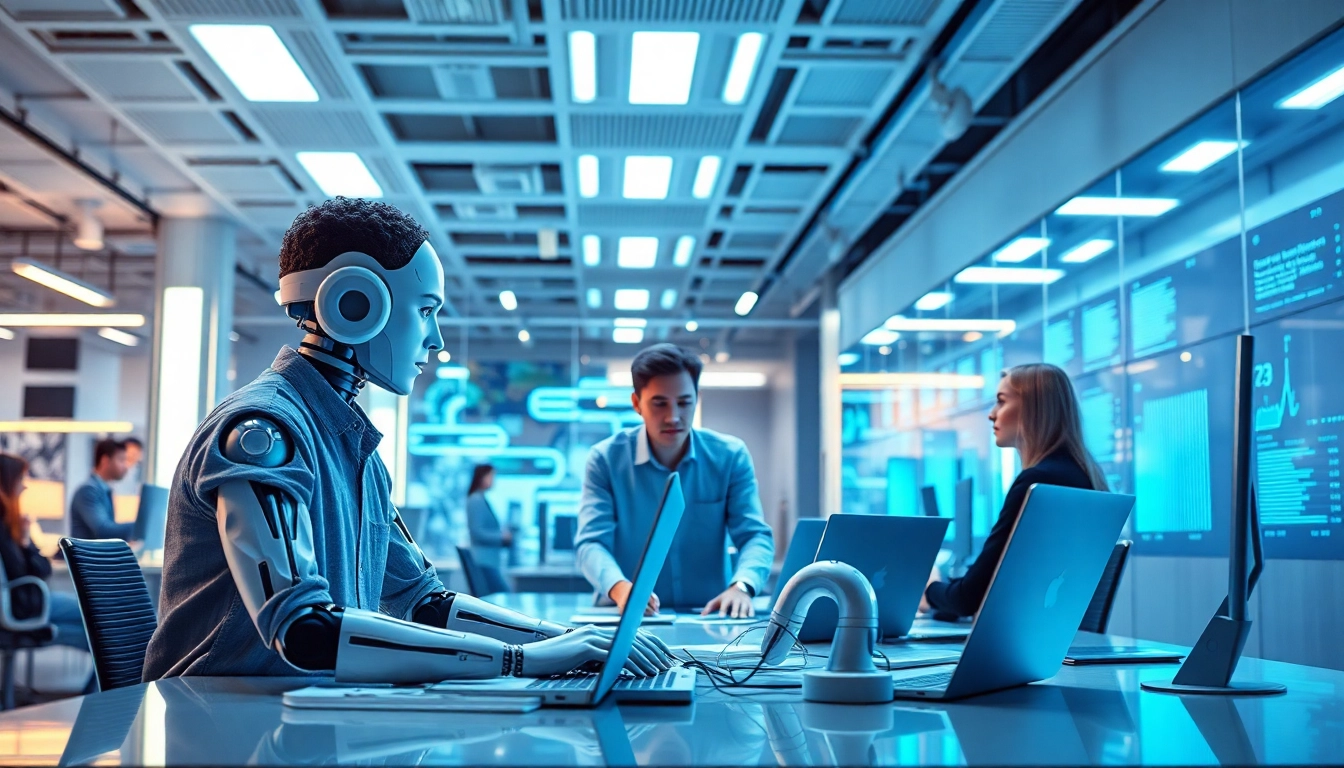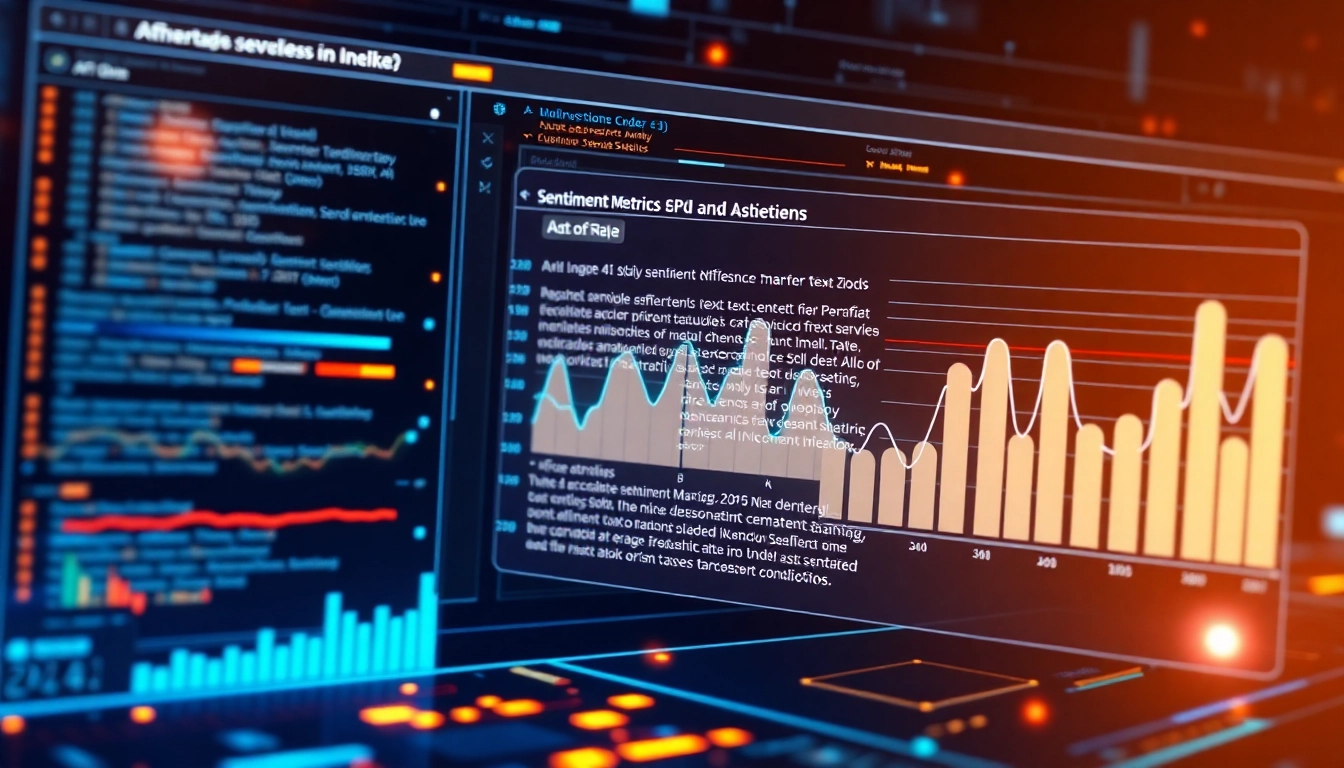Understanding Agentic Human AI
Definition and Core Principles
Agentic Human AI refers to artificial intelligence systems capable of taking autonomous actions to achieve specified goals without the necessity for extensive human intervention or oversight. The core principle of this technology is its ability to function independently, utilizing advanced algorithms and data analytics to make decisions, learn from experiences, and adapt to changing environments. Agentic AI can operate on various levels of autonomy, making it a versatile tool across numerous sectors.
In practical terms, these AI systems are designed to understand context, interpret complex data, and engage in intricate reasoning. This operational capacity not only enhances productivity but also allows organizations to reallocate human resources towards more creative and strategic tasks. The integration of Agentic Human AI into business processes signifies a shift towards smarter operations where machines and humans collaborate seamlessly.
Historical Context and Development
The journey of AI from rule-based systems to the development of agentic capabilities has been extensive. In the early days of AI, machine learning models relied heavily on human input for configuration and decision-making processes. However, advancements in neural networks and deep learning have enabled AI to learn from vast datasets autonomously. This evolution in technology has given rise to agentic AI, where systems not only learn but also apply knowledge to achieve new objectives independently.
The emergence of agentic AI can also be traced back to significant technological milestones, such as the development of the internet, which vastly improved data accessibility, and the rapid increase in computational power. Combined with innovations in natural language processing and computer vision, these developments have paved the way for agentic systems capable of engaging in complex tasks such as autonomous driving, robotic process automation, and sophisticated financial modeling.
Key Technologies Behind Agentic Human AI
Several core technologies underpin the development and functionality of agentic human AI:
- Machine Learning: Machine learning algorithms enable AI systems to learn from data patterns, improving their performance over time without explicit programming.
- Natural Language Processing (NLP): NLP allows AI to interpret and interact using human language, facilitating communication between machines and humans.
- Reinforcement Learning: This type of learning is based on action and feedback loops, where AI systems learn optimal behaviors through trial and error.
- Robotic Process Automation (RPA): RPA allows AI to automate rule-based tasks within business processes, achieving scalability and efficiency.
These technologies combined provide a robust framework for agentic AI to function effectively and autonomously across various industries, enhancing operational capabilities and decision-making processes.
Applications of Agentic Human AI
Healthcare: Enhancing Diagnostics and Patient Care
In healthcare, the application of agentic human AI can revolutionize diagnostics and patient care. AI systems can analyze vast amounts of patient data, including medical histories and genetic information, to provide precise diagnostics. For instance, AI algorithms have been employed to detect early signs of diseases like cancer through medical imaging analysis, outperforming human capabilities in certain scenarios.
Furthermore, AI-driven tools can assist doctors in developing personalized treatment plans, ensuring that patients receive care tailored to their unique health profiles. Telehealth platforms utilizing agentic AI can also automate patient follow-ups and monitor health metrics, thereby enhancing patient engagement and outcomes.
Finance: Automating Decision-Making Processes
The finance sector has seen a transformative impact from agentic human AI, particularly in areas such as risk assessment, fraud detection, and trading. Agentic AI can analyze market trends and economic indicators at an unprecedented speed, identifying trading opportunities or risks that may go unnoticed by human analysts.
Moreover, AI systems are being utilized to manage portfolios, automatically rebalance assets according to predetermined strategies and market conditions. This degree of automation reduces the likelihood of human error and enhances overall efficiency, allowing financial firms to focus on strategic investment decisions rather than data processing.
Education: Personalized Learning Experiences
In the education sector, agentic human AI is paving the way for personalized learning experiences. AI-driven platforms can analyze student performance data and learning styles to suggest customized content and study paths. This adaptability ensures that each learner progresses at their pace, maximizing knowledge retention and engagement.
Additionally, AI tutoring systems provide instant feedback and support, enabling students to address learning gaps promptly. By taking on the repetitive tasks of grading and assessment, agentic AI allows educators to devote more time to mentorship and support, thus enriching the learning experience.
Benefits of Integrating Agentic Human AI
Increased Efficiency and Productivity
The integration of agentic human AI within organizations is primarily driven by the promise of increased efficiency. By automating repetitive tasks, AI allows employees to redirect their efforts towards higher-value work. For instance, in manufacturing, AI-powered robots can handle assembly-line tasks, freeing human workers to engage in quality control and innovation initiatives.
In environments where speed and accuracy are critical, such as in healthcare diagnostics or financial trading, AI’s ability to process information rapidly can substantially enhance productivity. As a result, companies can achieve higher outputs without a corresponding increase in costs, thus improving their competitive edge.
Cost Reduction and Time Management
One of the most compelling advantages of agentic human AI is its capacity to reduce operational costs. By increasing automation and minimizing human error, businesses can lower labor costs and reduce material waste. For example, predictive maintenance powered by AI can foresee equipment failures, allowing organizations to conduct timely repairs, effectively reducing downtime costs.
Additionally, AI supports better time management across organizational processes. Automated systems can operate around the clock without fatigue, handling workflows independently and processing tasks continuously. This round-the-clock operation fosters productivity gains and leads to faster project delivery.
Enhanced Creativity and Problem-Solving
While automation is a significant selling point of agentic human AI, it also promotes enhanced creativity and problem-solving abilities within teams. By taking over mundane tasks, AI enables workers to focus more on creative and strategic challenges. AI’s ability to analyze data and identify trends can also inspire innovative solutions that might not have been considered, facilitating a culture of continuous improvement.
Real-world applications showcase this benefit; for instance, AI design tools assist graphic designers by providing design suggestions based on user preferences, enabling creative professionals to refine their ideas more efficiently. Thus, the synergy between human creativity and AI proficiency results in elevated performance and innovative outcomes.
Challenges and Considerations
Ethical Implications of Autonomous AI
The growing adoption of agentic human AI brings ethical considerations that cannot be overlooked. As AI systems gain autonomy, questions regarding accountability arise. Who is responsible for an AI’s actions, particularly in high-stakes situations such as self-driving car accidents or erroneous financial transactions? This ethical dimension necessitates thoughtful regulation and governance to ensure systems are designed and operated within an ethical framework.
Organizations must also consider bias in AI algorithms, which can lead to discriminatory practices if not addressed. Implementing diversity in training data and continuous ethics training for AI development teams can mitigate these risks, ensuring fairness in AI interactions and decisions.
Data Privacy and Security Issues
Data privacy is a critical concern in the context of agentic human AI, as these systems rely heavily on personal and sensitive information. Enhanced data collection capabilities can lead to breaches of privacy if not managed carefully. Organizations must uphold stringent data protection measures to safeguard users’ information and maintain their trust.
Implementing robust cybersecurity strategies and compliance with regulations such as GDPR can help organizations navigate the complex landscape of data privacy. Continuous monitoring and audits are essential to ensure that data handling practices meet privacy standards.
Ensuring Human Oversight and Collaboration
While agentic human AI systems are capable of working autonomously, ensuring human oversight remains essential. This oversight provides the necessary checks against the potential risks of AI errors and ethical dilemmas. Implementing a collaborative approach where humans and AI systems work in tandem can enhance decision-making quality and ensure accountability.
For effective collaboration, organizations should encourage a culture of openness and continuous learning. Training programs that equip employees with the skills to work alongside AI technologies can enable seamless integration while optimizing the benefits of both human insight and machine efficiency.
The Future of Work with Agentic Human AI
Predicted Trends and Innovations
The future of work promises significant transformations as agentic human AI technologies continue to evolve. Predicated developments include further automation of routine tasks, allowing for an emphasis on skills that require human intuition and creativity. This shift will likely necessitate a reevaluation of workforce training and education, preparing employees for roles that demand collaboration with AI systems.
Moreover, emerging trends such as AI-powered personalized marketing and predictive analytics will shape new business strategies. Companies that invest in these technologies will not only enhance customer experiences but also gain substantial insights that drive growth and innovation.
Preparing the Workforce for AI Integration
As organizations adopt agentic AI, preparing their workforce for integration is critical. Change management strategies that include clear communication about AI’s role and contributions can alleviate concerns and resistance among employees. Upskilling and reskilling programs should be established, equipping staff with the necessary knowledge to work effectively alongside AI technologies.
Furthermore, fostering a mindset of adaptability and lifelong learning will be paramount for future workers. Emphasizing agility in participation, and promoting skills that complement AI capabilities will empower employees to thrive in an increasingly automated workplace.
Potential for Human-AI Synergy
The ultimate potential of agentic human AI lies in harnessing synergy between human intelligence and machine capabilities. By leveraging the strengths of both, organizations can foster environments where creativity, critical thinking, and technological efficiency coexist. This collaboration can lead to unprecedented advancements in every industry, from healthcare to finance.
Encouraging a culture that embraces AI as a partner rather than a replacement will not only enhance productivity but will also drive innovation and transformation. Companies that navigate this transition successfully will position themselves as leaders in the evolving landscape shaped by agentic human AI.

